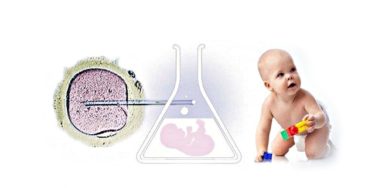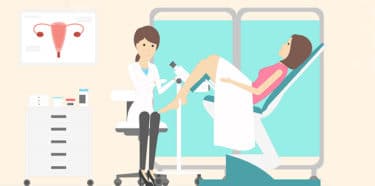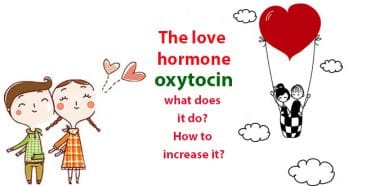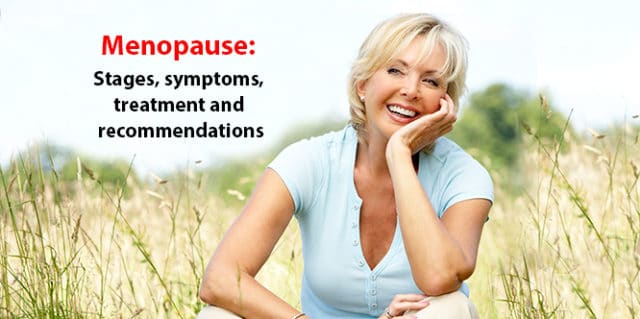 Menopause is the period in a woman’s life when menstruation ceases, and it is characterized by lack of menstruation for one year. Technically speaking, it refers to a woman’s last menstrual period. Menopause is a very significant stage in a woman’s life, and brings in a number of changes both mentally and health-wise. Menopause is a completely natural transition. Through tailored menopause treatment, every woman can get through this experience comfortably and healthily. Genetic history and the age at natural maternal menopause are also crucial for women with regards to their menopause.
Menopause is the period in a woman’s life when menstruation ceases, and it is characterized by lack of menstruation for one year. Technically speaking, it refers to a woman’s last menstrual period. Menopause is a very significant stage in a woman’s life, and brings in a number of changes both mentally and health-wise. Menopause is a completely natural transition. Through tailored menopause treatment, every woman can get through this experience comfortably and healthily. Genetic history and the age at natural maternal menopause are also crucial for women with regards to their menopause.
Table of Contents
What is menopause?
Menopause is when a woman’s periods stop and her ovaries stop functioning. At this stage, the ovaries slow down the production of estrogen and progesterone before they stop functioning completely. Menopause is diagnosed when a woman has gone 12 consecutive months without a menstrual period and it usually occurs in a woman’s 5th decade.
A woman is considered to have entered into early menopause in mid 40s and late menopause in mid 50s. There is no reliable laboratory test to predict when a woman will enter into menopause. The age for onset of first menstrual period is not associated with the age for onset of menopause. Menopause is a natural biological process.
Although your fertility ceased, you can still live healthy, vibrant and a sexually active life. Some women even see menopause as an opportunity to live their sexual life with an ease of mind since they no longer have to worry about unwanted pregnancy.
Stages of menopause
There are 3 stages to menopause:
- Perimenopause (the time around menopause)
- Menopause
- Postmenopause (the time after menopause)
Perimenopause (the time before menopause) stage
Perimenopause describes the time when a woman may begin to experience some of the symptoms that can occur with menopause. Changes and symptoms usually begin with perimenopause. Symptoms of this stage may begin a few years before your last menstrual period. Perimenopause lasts an average of 4 years but may vary in some women.
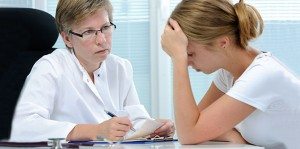
If you have not had a period for 12 months, this means that perimenopause stage is over and you are in menopause. Your ovaries will continue to function during this stage, but their function will begin to decline. Even if you are experiencing perimenopausal symptoms, you can still become pregnant because your ovaries can still function, though slowly. Continued contraception is advised in order to avoid unwanted pregnancy.
Menopause stage
If you have not had a period for 12 months, then you are in menopause. Menopause is a very natural process in which a woman experiences a transition from one phase to another. During this stage, the ovaries lose their ability to function and fertility ceased.
Postmenopause stage
The term “postmenopause” describes the years following menopause. During this stage, menopausal symptoms, such as hot flashes, can ease for many women. But, due to a lower level of estrogen, postmenopausal women are at increased risk for a number of health conditions, such as osteoporosis and heart disease.
This risk may be reduced by hormone therapy and/or healthy lifestyle changes. Since every woman is affected differently by hormonal changes, talk to your doctor to learn what steps you can take to reduce your individual risk.
Menopause symptoms
- Menstrual irregularities
- Frequent hot flushes
- Night sweats
- Rapid weight changes
- Fatigue and tiredness
- Frequent urination
- Vaginal dryness
- Tenderness in breasts
- Lack of interest in sex
- Urinary incontinence when coughing or sneezing
- Sudden mood swings
- Sleep disturbances
Symptoms of perimenopause, menopause and postmenopausal stages are similar. The symptoms at this stage is different and of varying duration in every woman. The symptoms usually resolve within 5 years; however, if these symptoms reduce your quality of life, consult your doctor.
The following is a list of common symptoms:
Hot flushes in menopause
Hot flushes are sudden feelings of heat felt on face, upper body and throughout body. It may start with menstrual irregularities and continue up to 10 years, but 80% of women are free of this symptom after five years. It usually lasts between 30 seconds to 10 minutes.
Although the exact etiology of hot flushes is unknown, they are likely to be caused by hormonal and biochemical changes due to decreased estrogen levels. The severity of hot flushes may vary among women depending on how fast estrogen levels fall. Women can alleviate their hot flushes by dressing lightly and in layers, doing regular exercises, carrying a fan to use, applying stress management and avoiding spicy foods.
Night sweats in menopause
It is a common symptom that is experienced during menopause. While sleeping, hot flush, followed by an intense sweating occur. As is the case with hot flushes, the intensity of sweating may also vary depending on the room temperature and how fast the hormones are changing.
Night sweats may disrupt your sleeping patterns. Although these sweats are considered normal for menopause, they can be a sign of a different health problem. You can contact your doctor to make sure.
Weight gain in menopause
The most important problem of many women is the weight gain during menopause. This symptom can be due to decreased thyroid activity. However, the main reason for weight gain during menopause is decreased physical activity and increased eating behaviors. Weight gain can be prevented by regular exercise and a balanced diet.
Loss of libido in menopause
Another consequence of hormonal changes is lack of sexual interest. This may get better or worse, but other factors other than menopause may also play a role in the lack of interest in sex. Stress, sleep disturbances, medications and anxiety can affect sexual experience. Your doctor can help you deal with this problem with your partner.
Fatigue in menopause
You may experience fatigue and tiredness during menopause. Sometimes sudden feeling of tiredness makes you leave things halfway done. This happens when hormones fail to regulate cellular energy in the body. Sometimes short temper and distraction can be added up to these issues.
Frequent urination in menopause
The urethra (the tube that carries urine from the bladder to the outside of the body) shows signs of drying out and thinning and loses its elasticity with the decreased level of estrogen. This increases the risk for urinary tract infection and creates the need to urinate more frequently.
Vaginal dryness in menopause
Decreased estrogen levels during menopause decreases blood flow to the vagina, causing vaginal dryness. This may result in pain and discomfort during sexual intercourse. This problem can be overcome by water-soluble lubricants.
If the lubricants don’t provide a solution, you can get advice from your doctor. Prescription vaginal creams and suppositories can help reduce dryness.
What is early menopause?
Early menopause is when a woman’s periods stop before the age of 40 naturally or as a result of a disorder and interventions. In this rare case, the ovaries no longer function. Women in early menopause experience symptoms such as hot flushes, emotional changes, vaginal dryness and decreased sex drive. Some women may experience these symptoms more severely.
Furthermore, women who go through early menopause become more predisposed to bone diseases compared to those with normal menopause. This increases the risk for osteoporosis. Therefore, treatment is crucial in early menopause.
Cessation of menstrual bleeding (amenorrhea) in women’s lives during these ages can also be seen due to sudden weight loss, excessive exercise, stress, adhesions in uterus following abortion or other surgical interventions. Since amenorrhea can cause bone loss due to decreased estrogen hormone, it is absolutely necessary to seek medical attention.
Causes of early menopause
- Chromosome defects such as Turner Syndrome
- Genetic factors such as family history of early menopause
- Autoimmune diseases such as thyroid disease and rheumatoid arthritis
- Surgical removal of ovaries
- Previous chemotherapy or pelvic radiation therapy
What is late menopause?
There is no definite age for the onset of menopause, but most women enter into menopause in their mid-40s to mid-50s. If you are still having periods past age 51, you may be experiencing late menopause. If you are sexually active and do not wish to get pregnant it is important to use contraceptive methods, even if your menstrual cycles are irregular.
There may be several reasons why a woman has not entered into menopause but you should see a doctor immediately in such circumstances. The doctor first checks family history, then conducts physical examination and may also request some tests.
Causes of late menopause
- Thyroid
- Obesity
- High estrogen level
- Genetic factors such as family history of late menopause
- Pregnancy in the 50s
Menopause treatment
Menopausal symptoms may occasionally cause distress and disrupt everyday life. In this case, there are many different treatment options that can make your life easier. In this section we will take a look at these options:
Hormone replacement treatment (HRT)
HRT or hormone therapy (HT), also called postmenopausal hormone therapy (PHT), consists of estrogen or a combination of estrogen and progesterone (progestin).
Hormone therapy is used to control menopausal symptoms associated with decreased estrogen levels, such as hot flashes and vaginal dryness, and HT represents the most effective way of treating these symptoms.
Bioidentical hormone therapy
In recent years, there has been an increased interest favoring the use of “bioidentical” hormone therapy in perimenopausal women. Bioavailable hormone preparations contain hormones that have the same chemical formula as those produced naturally in our bodies
Hormones are derived by modifying compounds extracted from naturally occurring plants in the laboratory. Some of these bioidentical hormone preparations have been approved by the FDA in the United States and manufactured by pharmaceutical companies, while others are prepared in pharmacies by specifically tailoring them to each patient’s needs.
Oral contraceptives (Birth control pills)
Women in transition to menopause tend to experience a significant amount of bleeding when treated with estrogen. Oral contraceptive pills are another hormone therapy usually prescribed for perimenopausal women to treat their irregular vaginal bleeding.
Local (vaginal) hormone and non-hormonal treatments
There are hormonal treatments that are applied locally (ie., directly to the vagina) to relieve the symptoms of vaginal estrogen deficiency. Local therapies include vaginal estrogen ring (Estring), vaginal estrogen cream or vaginal estrogen tablets.
In some cases, local and oral estrogen treatments are combined. The use of vaginal moisturizers and lubricants, such as creams or lotions during sexual intercourse, are non-hormonal options that can be used to prevent the discomfort of vaginal dryness.
Antidepressants
Antidepressants have been found to be effective in about 60% of women suffering from hot flashes and mood swings. However, antidepressants should be used with caution due to their side effects, such as decreased libido or sexual dysfunction.
Life-style changes
A healthy diet and regular exercise can be very helpful in relieving menopausal symptoms. It may also be a good idea to kick any old, unhealthy habits like smoking or drinking too much alcohol.
Other life style changes may involve dressing lightly and in layers as well as avoiding potential triggers like caffeine and spicy foods.
Plant estrogens (phytoestrogens, isoflavones)
Isoflavones are chemical compounds found in estrogens of soy and plant origin. They have a chemical structure similar to estrogens that are naturally produced by body; however their efficacy as an estrogen is estimated to be much lower than that of the actual estrogens. Two types of isoflavones, genistein and daidzein, are found in soybeans, chickpeas and lentils and are considered to be most potent estrogens of phytoestrogens.
Studies have shown that these compounds can help alleviate hot flashes and other symptoms of menopause. In particular, women who have had breast cancer and do not want to receive hormone therapy (HT) with estrogen sometimes use soy products to alleviate menopausal symptoms.
There is a perception among many women that plant estrogens are “natural” and therefore safer than HT, but this has not been scientifically proven. Further research is needed to fully establish the safety and potential risks of phytoestrogens.
Vitamin E
Some women take vitamin E supplements to alleviate symptoms of hot flashes. However, taking too many of them is thought to increase the risk for cardiovascular diseases.
Black cohosh
Black cohosh is a popular herbal product for alleviating hot flashes in Europe. This herb has become increasingly popular in the US, and its use is supported by the North American Menopause Society for up to six months to treat menopausal symptoms.
However, scientific studies that prove the benefits and safety of this product are limited. The studies measuring the effectiveness of herbs as menopause treatment found no significant difference.
Recommendations for menopause
- Whenever you experience hot flushes drink a glass of cold water or go to somewhere cool. Dress in layers. Try to identify what triggers the hot flushes. This may include hot drinks, caffeine, spicy foods, alcohol, stress, hot weather and a hot room.
- For vaginal dryness use over-the-counter, water-based vaginal lubricants (Astroglide, K-Y jelly, etc.), silicone-based lubricants or moisturizers (Replenes etc.). Choose glycerin-free products. Glycerin can cause burning sensations or irritation in women who are sensitive to chemicals. Being sexually active also helps as it increases blood flow to the vagina.
- Get enough sleep. Avoid caffeine and alcohol, which can make sleeping harder. If you experience night sweats, use cotton linens, use a fan in the bedroom, wear thin, cotton pajamas or nightgowns, use a damp cloth to cool your face and keep your head on the edge of the bed.
- Techniques such as deep breathing, brisk breathing, massaging, and progressive muscle relaxation can help alleviate menopausal symptoms.
- Strengthen your pelvic muscles by doing kegel exercises. This can help you overcome urinary incontinence.
- Follow a diet that includes a variety of fruits, vegetables and whole grains. Limit your intake of saturated fats and sugar. Consult your doctor if you need daily supplementation of calcium or vitamin D.
- Quit smoking. Smoking increases the risk for heart disease, stroke, osteoporosis, cancer, among other health problems. Furthermore, it may contribute to hot flushes and cause early menopause.
- Do regular exercise. Do regular exercise to help protect against heart disease, diabetes, osteoporosis, and other diseases associated with aging.
References: 1- Menopause / Change of life 2- Symptoms of menopause 3- Menopause 4- What causes menopause


